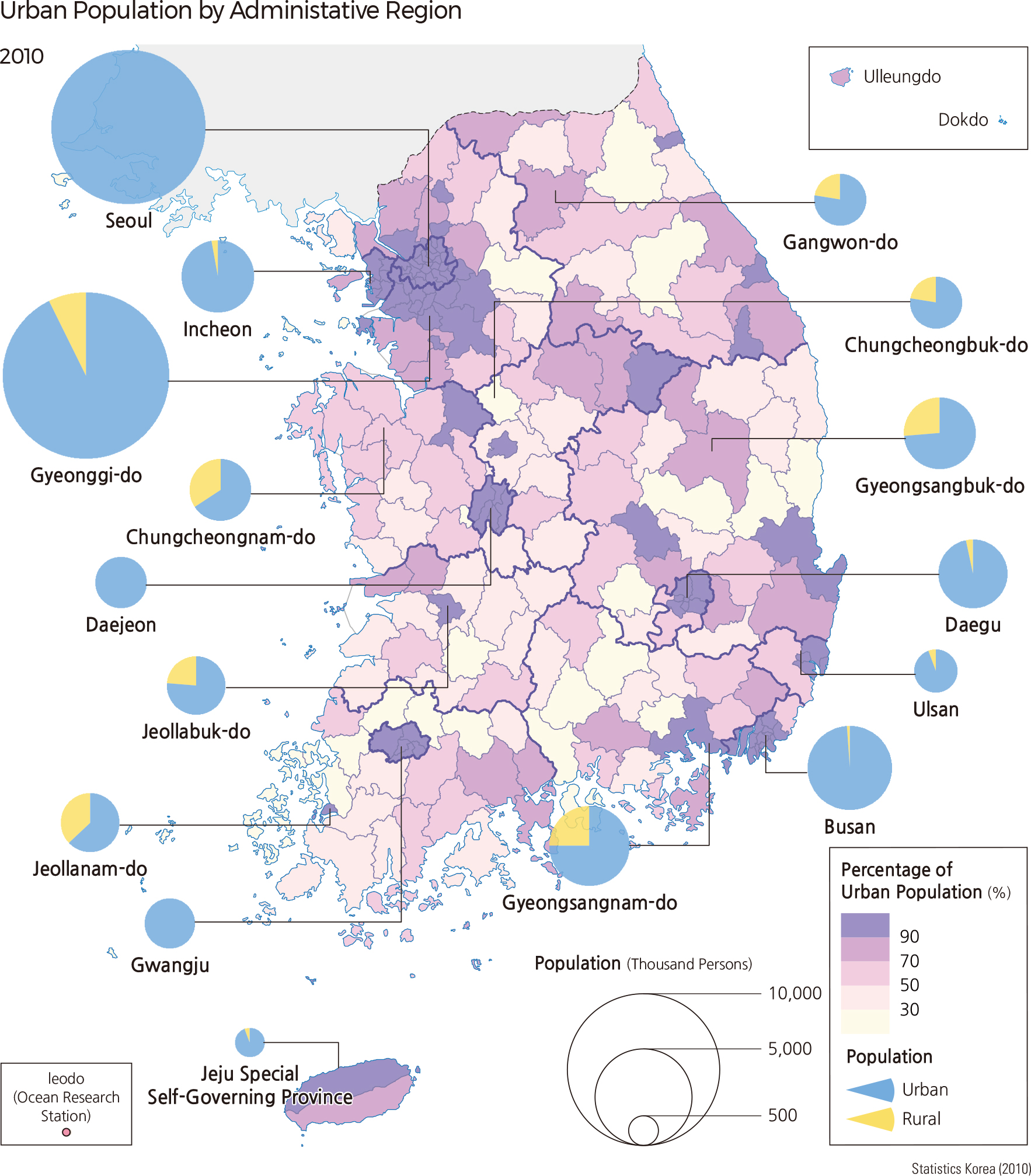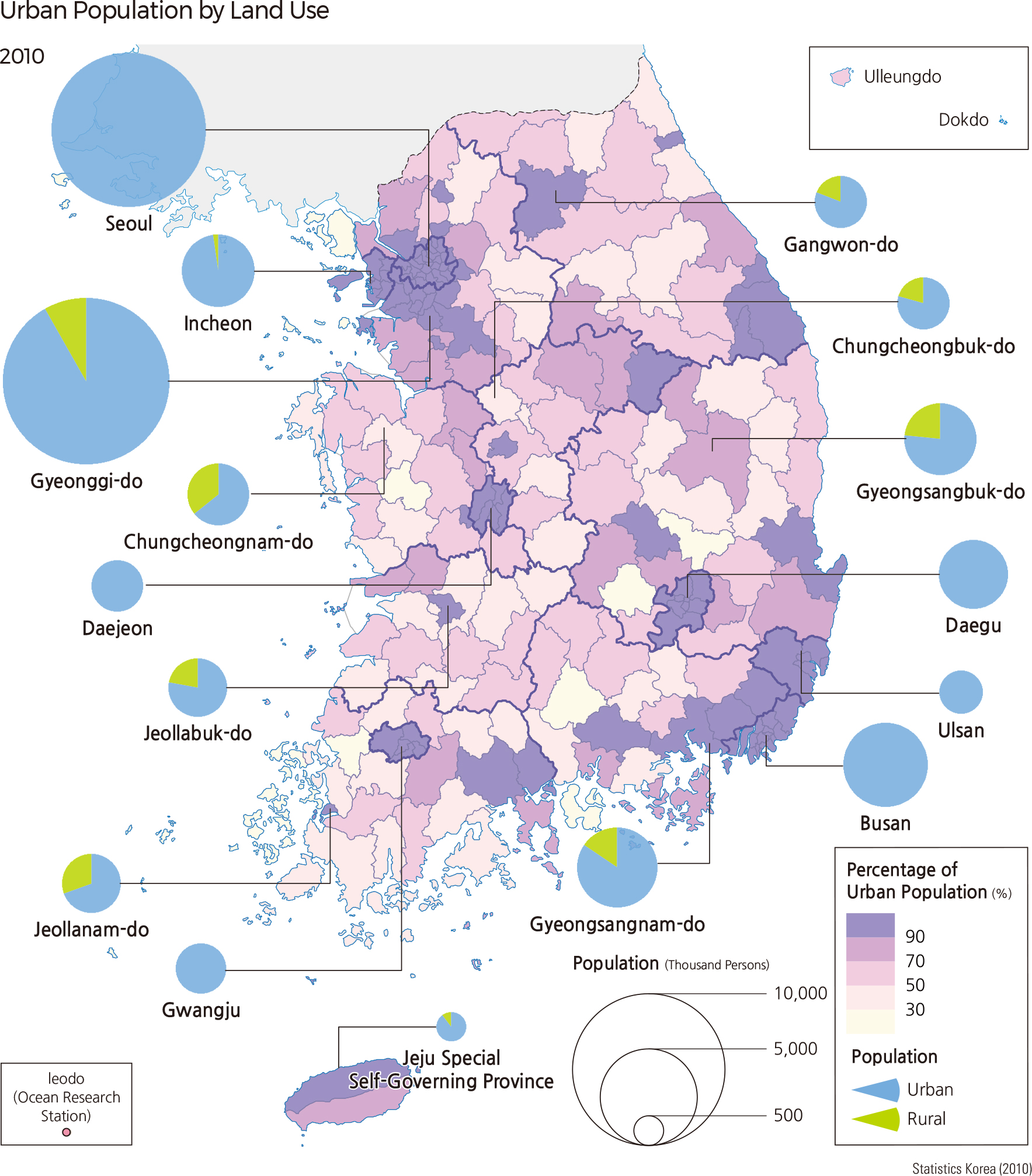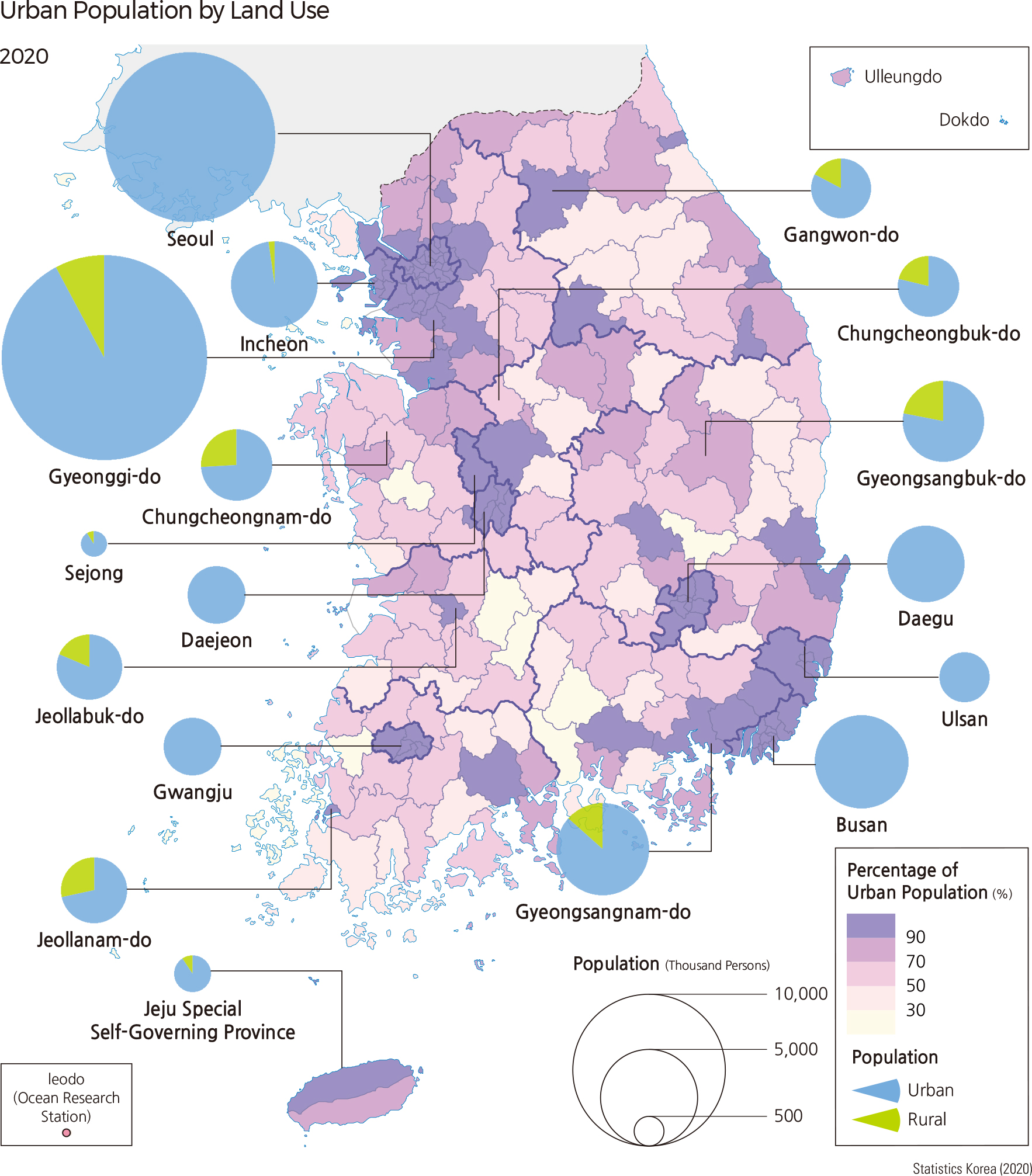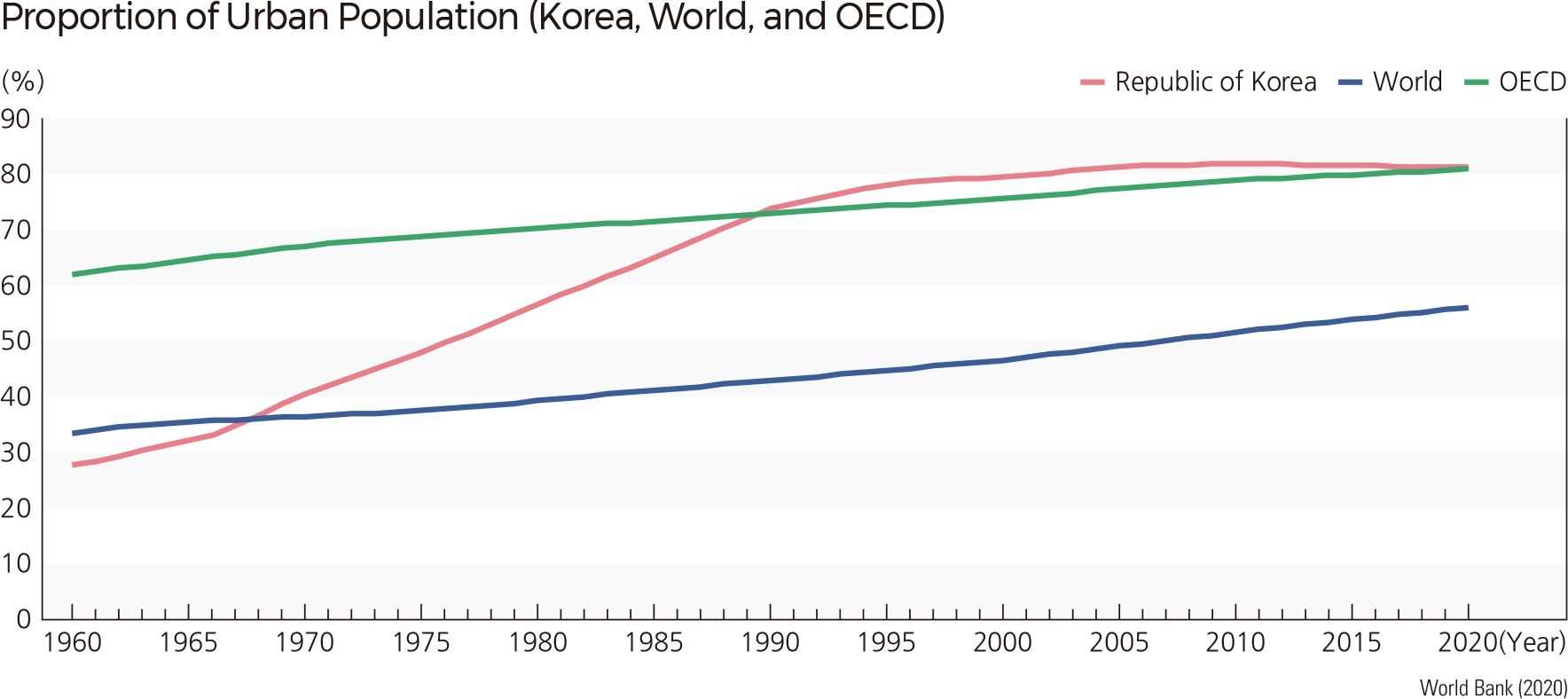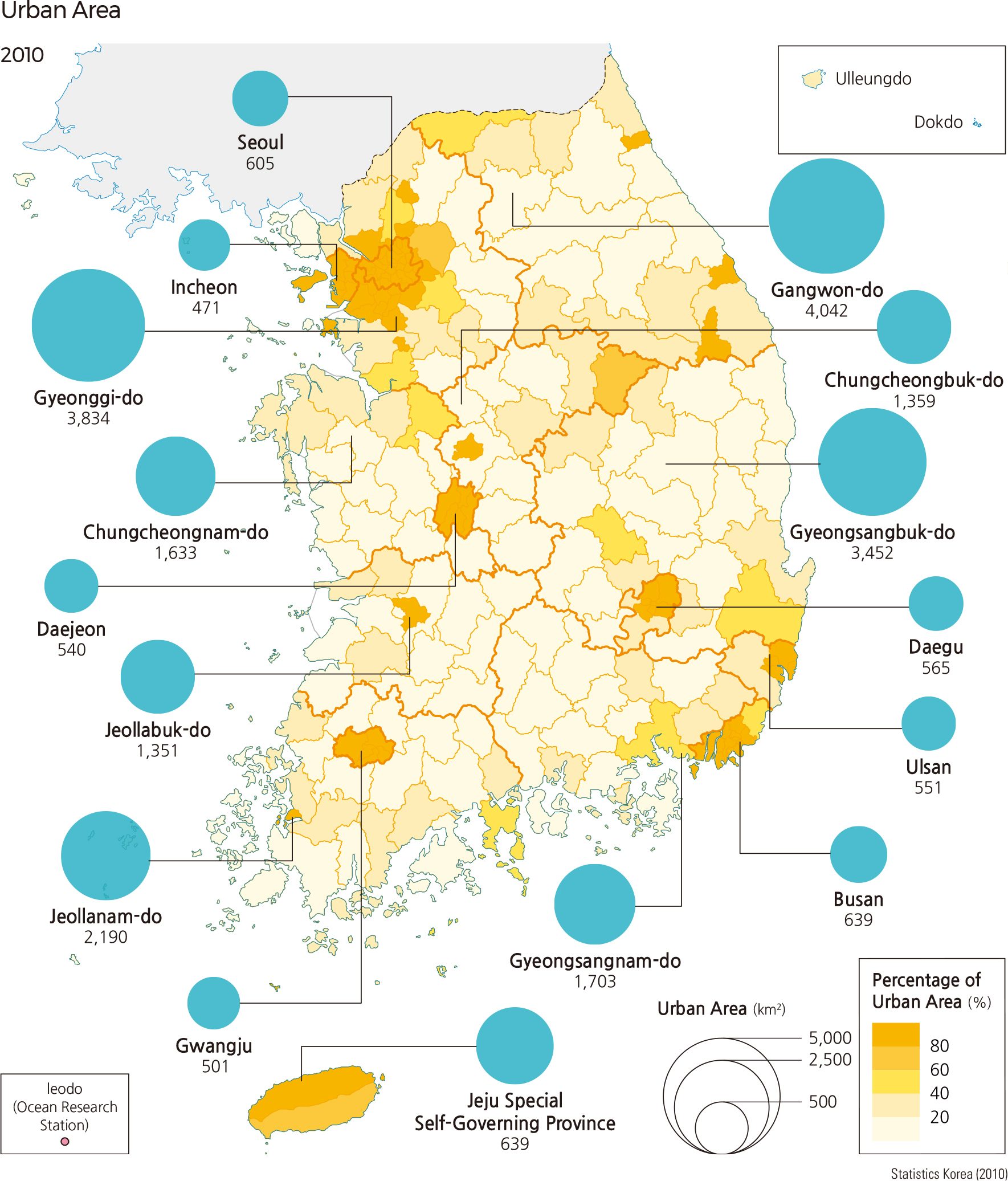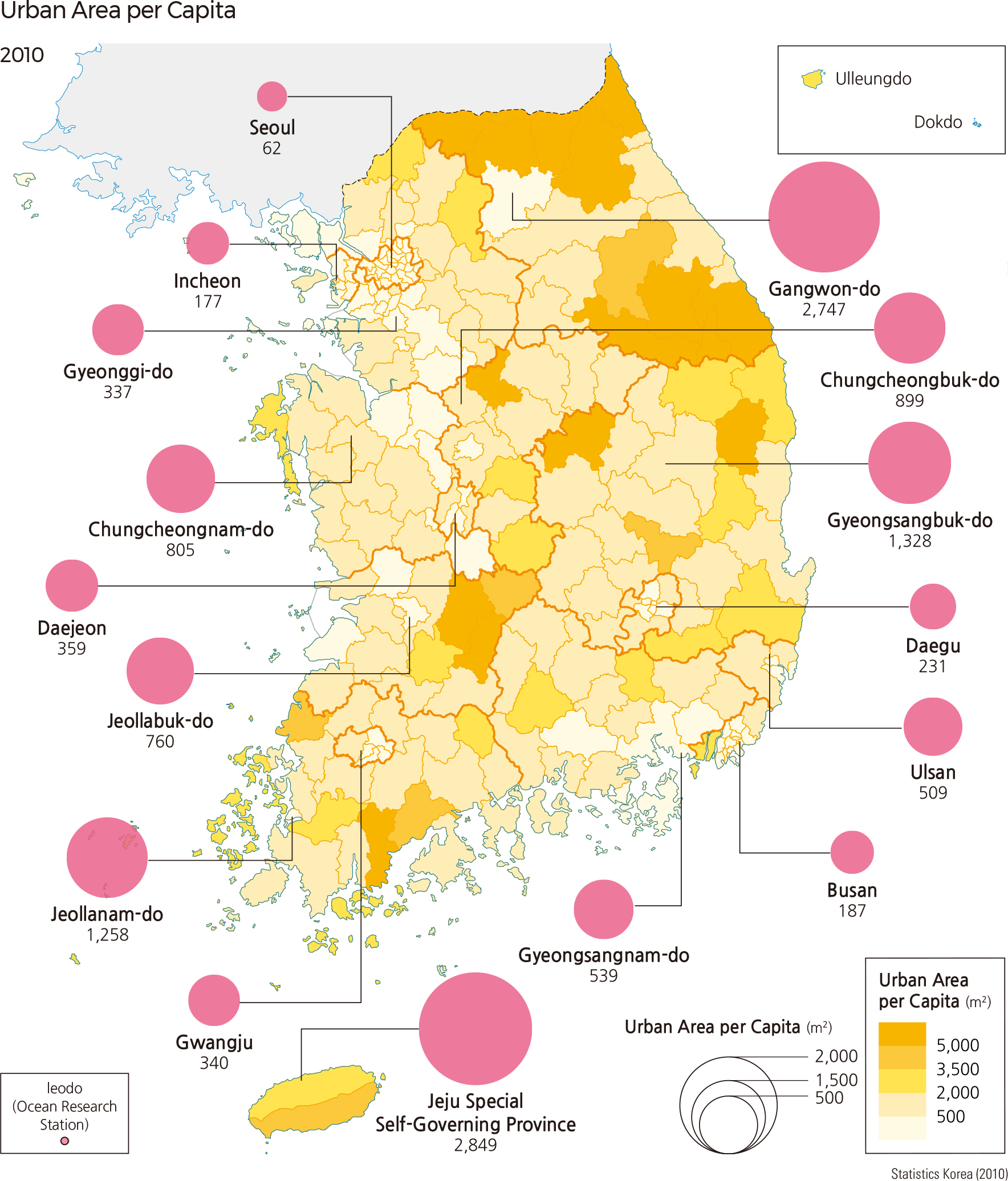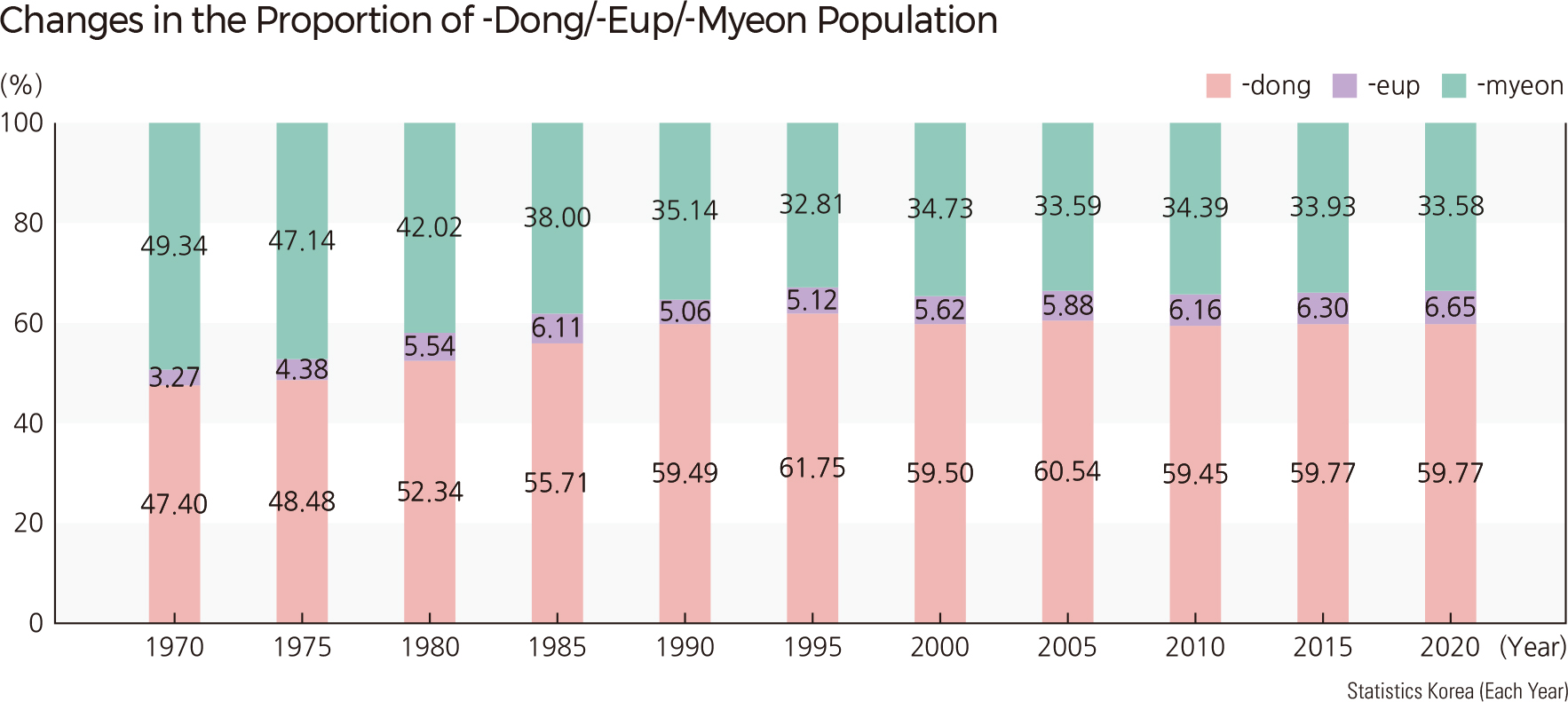English III 2021
Korea’s urban population increased steeply until the 1990s, and it is higher than the world average and similar to that of OECD countries in 2020. In Korea, the urban population is the number of people living in either administrative level, such as -dong or -eup districts, or urban areas, classified by land use. However, there are no significant differences between the two methods of counting. Generally, urban areas by land use are largely distributed over metropolitan cities, and the proportion of the urban population is high in these areas. The proportion of rural areas (-myeon districts) had continued to decline, while the proportion of urban areas (-dong/-eup districts) has risen. The proportion of -dong or -eup districts in metropolitan cities increased and reached 50 percent of all districts as of 2005, and it is still higher in the cities than in other regions. Korea’s population is concentrated in the Seoul Metropolitan Area, and most of the population in the area lives in urban areas. Such a tendency is also reflected in the 2010 and 2020 distribution maps of urban population and urban areas in provinces and -si/-gun/-gu areas. Meanwhile, the ratio of urban areas per capita is higher in areas with less population than in large cities. |
